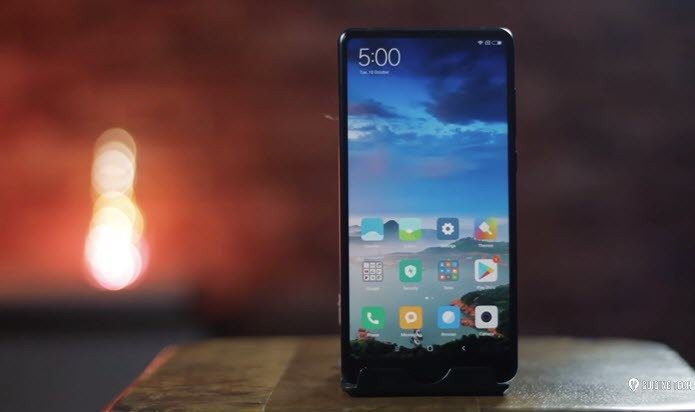Hence, we can only guess what the future smartphones have to offer that will easily put even the best of current models to shame. The iPhone X might be the best smartphone in the world now but there are some companies that are working hard towards making some really futuristic smartphones that will put the cherished Apple 2017 flagship to shame. No, we’re not only talking about hardware but a number of innovations also in software that make these devices way ahead of the time. Unfortunately, there are not many working prototypes available for these devices but, looking at the history of these brands, we are sure that these future smartphones will see the light of the day very soon. Here are two future smartphones that make the iPhone X look like a fancier cousin of the Nokia 3310.
1. Finney By Sirin Labs
We all know about cryptocurrencies such as Bitcoin and many of us also understand its potential and value. Now, to maintain a record of this digital currency, a blockchain or an online record needs to be maintained, which is also referred to as mining. People do mining or keeping a record of bitcoin exchanges to get rewards and earn more bitcoin. Now, what Sirin Labs have created is an operating system and a smartphone secure enough to hold cryptographic currency. They have also prosaically named it after bitcoin pioneer Hal Finney, calling it the Finney smartphone. Sirin labs is not a new kid on the block. Around a year ago, they had presented a smartphone that was claimed to be the most secure phone in the world. But it came with a hefty price tag of $14,000 and did not have any precious metal or jewels embedded in it. That price tag, however, was due to the security it offered. Needless to say, the idea did not take off as expected. However, the Finney smartphone surely seems to be a better proposition considering its price tag of $999, which is much similar to that of the iPhone X.
Smart Defence
Finney inherently has a robust enough operating system and relies on IOTA’s Tangle technology to connect with similar devices, including phones and computers to complete the blockchain without the need to have specialized equipment such as mining farms. The phone is expected to launch in early 2018. It will support most crypto-wallets and secure exchange access applications and, apart from utilizing their own SRN tokens (their version of cryptocurrency), it will also support other tokens. In order to increase security, the Finney smartphone employs a unique, behavior-based intrusion prevention system where the moment the phone detects a new pattern of usage, it automatically becomes alert. Moreover, there is also a physical security switch. The phone itself will be resistant to blockchain-based tampering, which means it will require a considerable amount of effort and time to break through its defenses.
Powerful Hardware
If you think that Sirin is charging all that money just for software and security features, you must take a good look at what the Finney smartphone has to offer. For a price close to the base variant of the iPhone X, the Finney will offer a 5.2-inch QHD edge-to-edge display, 8GB RAM, 256GB internal storage, Bluetooth 5.0, and a top-notch security system. There is a 16-megapixel camera unit at the back while the front sports a 12-megapixel camera.
2. Turing Monolith Chaconne
Turing Robotic Industries is a madhouse of crazy geniuses who are on a mission to create a rocket out of a smartphone and their second offering – the Monolith Chaconne – is pure madness. For those who love tech, this smartphone is out of the world! I just love what they intend to do with this futuristic phone. We all know that Qualcomm’s Snapdragon 830 is a pretty fast processor, right? Now, imagine a phone running not one but three of those beauties. Did your jaw just drop? I know how you feel. But this is just the tip of the iceberg. So, hold on and enjoy this ride.
Pure Insanity
The Monolith Chaconne is a marvel of smartphone engineering and what I’m about to describe to you now may make you think that the Turing Robotics have some piece of alien technology that they are planning to reverse engineer and make devices … no, not a Chitauri army … but something even darker at least in color. Jokes apart. The robotics company aims to use the computing power of all three Snapdragon 830 chipsets together that will offer the user the computing muscle of 24 Kryo-cores. Woo-hoo! Now, the question is why use all this raw power? Oh, didn’t I mention the onboard artificial intelligence system? My bad. A custom-built Swordfish OS, the improved version of the Sailfish OS that featured on the Jolla Phone, will be responsible for making use of all this raw power and running a deep learning artificial intelligence engine right on the Chaconne itself. The previous device by Turing, the Cadenza, was called insane by many. With the Chaconne, people at Turing have pushed it up 10 notches.
Bye Bye iPhone X
Let’s talk more about the integration of three Qualcomm Snapdragon 830 processor to the device. However, what I’m going to say next may make you hate your phone even if you have got the X. The Turing Monolith Chaconne smartphone houses 18GB of RAM and 1.2 terabyte – yes, that’s 1,200 gigabytes of internal storage. It sports a 6.4-inch UHD resolution display and a hydrogen fuel cell-powered battery unit. If you’re wondering about the cameras, there is a 60-megapixel primary camera at the back while a 20-megapixel front facing camera has also been provided. The only drawback of this device as of now is that its parent company has not given any indication of the price. However, we can assume that it’s not going to be anything less than the price of the iPhone X.
Future Holds More Surprises
These devices surely beat the hell out of any phone available in the market — be it Samsung or Apple or even Google for that matter. Both these phones are in development phase right now and their companies have promised to launch them soon. So, hopes are high and fingers are crossed as this is as good as future smartphone technology gets. The above article may contain affiliate links which help support Guiding Tech. However, it does not affect our editorial integrity. The content remains unbiased and authentic.
















